active transport: walking or cycling
description: transport modes requiring physical activity
59 results
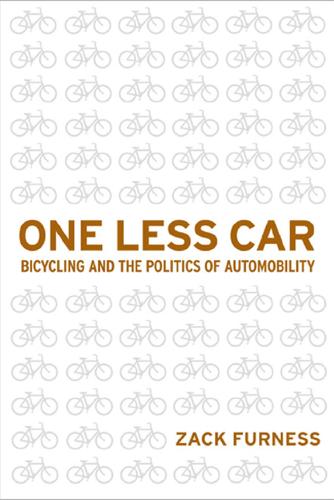
One Less Car: Bicycling and the Politics of Automobility
by
Zack Furness
and
Zachary Mooradian Furness
Published 28 Mar 2010
which coordinated bike blocs at the event, they can give protesters a wider range of flexibility with their demonstrations and can provide logistical support to demonstrators on foot.118 Moreover, the incorporation of bikes into street protests contributes to a festive atmosphere that not only “softens” the image of protesters but also “conveys an environmental message without a placard.”119 The most obvious impact that Critical Mass has as a strategic action is to create, or in some cases rejuvenate, people’s interest in bicycles as vehicles for public expression. a new wave of creative bike demonstrations, protest rides, and celebrations ensued since Critical Mass gained popularity in the 1990s, including the somber memorial rides used to pay tribute to cyclists killed by automobiles, as well as the playful World naked Bike ride, started by activist/artist Conrad Schmidt as a protest against the indecency of oil.120 By presenting bicycling as something other than a competitive activity, an amalgamation of cliquey subcultures, or an Über-rational utilitarian mode of transportation, Critical Mass has at times successfully attracted new people to bicycling who are otherwise disinterested in the identity of being a bike rider. Charles Komanoff highlights the importance of this shift in a speech delivered to Bike Summer attendees in 2005: Critical Mass is generating new energy for cycling.
…
For example, bicycle industry analyst Jay Townley observes that the number of cyclists riding bicycles worth more than $4,000 increased from about 20,000 to 90,000 between 2000 and 2005, while the number of high-end road bikes sold in the United States—priced at roughly $1,100 a piece—increased fourfold in the same time frame (from 145,000 to 498,0000): these high-end bikes accounted for 15 percent of all sales and nearly 40 percent of the retail dollars spent on bicycles in 2005.81 in addition to the emergence of a $10,000 bicycle market, guided winery tours, and leisure events with entry fees, even some of the most common cycling activities require specialized and somewhat expensive equipment (bikes, clothing, and/or accessories) as well as—ironically enough—an automobile for transporting bicycles to specific destinations, whether a road race, a Cyclocross course, a vélodrome, a BMX ramp, or a mountain bike trail in the woods. My point in calling attention to these examples is that with so many cyclists staking a claim to the bicycle as a symbol of nonconformity, voluntary simplicity, and even liberation, it is important to recognize that the bicycle is still firmly embedded within a market economy that not only valorizes unsustainable consumption but also recuperates and depoliticizes some of the very ideas and practices that propel bike advocacy.
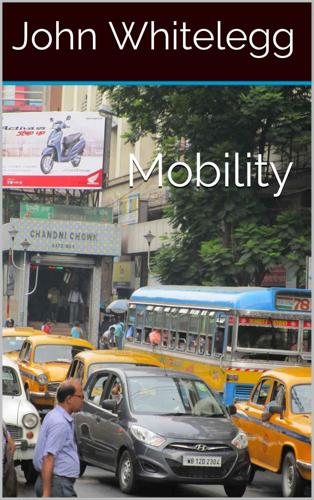
Mobility: A New Urban Design and Transport Planning Philosophy for a Sustainable Future
by
John Whitelegg
Published 1 Sep 2015
This is what it would look like: The Vision A zero carbon transport future will provide better access for more people to more things than is currently the case. Traffic congestion and time wasted stuck in jams will be a thing of the past and time currently wasted on commuter trips will be spent on rewarding and enriching activities. By 2050 all urban and rural areas will have significantly enhanced public transport and cycling facilities bringing high quality and low-cost transport choices within everyone’s reach. Those who opt not to use a car will save thousands of pounds a year by avoiding the fixed and variable costs of car ownership and use, and will also avoid the uncertainties and potential disruption of oil price shocks as the world adjusts to shortages of supply and increased demand from developing countries and the rapidly growing economies of China and India.
…
We cannot accommodate an annual average percentage increase in distance travelled for all 7 billion of us so we may as well start explaining, designing and delivering a low mobility alternative. It could not be clearer that most governmental statements in the UK about new urban design or so-called “active” transport (this means walking and cycling) are meaningless unless we engineer this paradigm shift from high mobility to low mobility. Such a paradigm shift also involves a shift in language. The phrase “low mobility” whilst accurately describing a world characterized by fewer kilometres travelled per person per annum fails to convey the richness of a world characterised by many more destinations opportunities within a much smaller physical area and a world where enormous amounts of time and money (and pollution) are not devoted to the business of accessing distant places.
…
There is a significant positive association between the density of traffic around children’s homes and obesity, as measured by the Body Mass Index (Jerrett et al, 2010). A research project carried out in Atlanta (USA) found that each additional hour spent in a car per day is associated with a 6% increase in the risk of obesity (Frank et al, 2004). The relationship between declining levels of active transport (walking and cycling) and obesity has been explored in detail by Roberts and Edwards (2010) and very clearly summarised by Pucher (2010) and Bassett et al (2008) and this is reproduced as Figure 8.1. Woodcock et al (2009) estimated the health effects of transport policies that would meet greenhouse gas emission reduction targets.
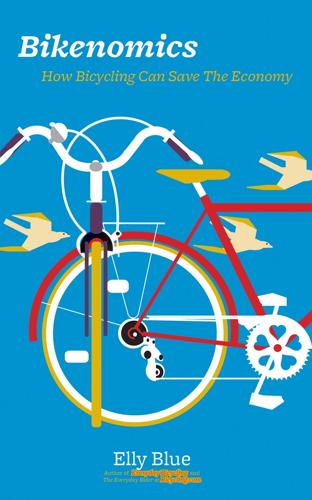
Bikenomics: How Bicycling Can Save the Economy (Bicycle)
by
Elly Blue
Published 29 Nov 2014
But history—and Houston—show that bigger projects succeed better, both in getting built and in serving emerging needs. A bigger vision leaves room for negotiation; a compromise on a large proposal is still better than full funding of a tiny one. The federal government only began spending money on active transportation—that is, infrastructure that supports transit, bicycling, and walking—in 1991. An increasing amount of cycling improvements have been paid for in this way in recent years, but the amount spent on nonmotorized travel still adds up to less than 2% of the federal transportation budget.43 Still, this small amount of money has done great things.
…
Reaching the 2% mark of federal transportation funding was seen as a major victory by advocates. The 1% mark—or $1 per U.S. resident per year spent on cycling and walking projects—was reached in 2000. For perspective, the federal transportation budget is itself less than 2% of the total U.S. budget. See Gotschi and Mills, “Active Transportation for America: The Case for Increased Federal Investment in Bicycling and Walking, 2008. This paper is a thorough overview of the economics of bicycling and I am indebted to its authors for their framing and research. 44 Figures courtesy of Transportation Alternatives. 45 Snyder, T. “Federal Funding Means More Bike Commuting.”
…
Portland, Oregon removed parking minimums in the 1980s in areas with frequent transit service, with good success (it has very recently reinstituted them after neighbors of a planned new development feared that on-street parking in that area, which is free, would become hard to find). 98 Gotschi, T., and Mills, K., “Active Transportation For America,” Rails to Trails Conservancy. 2008 99 Pucher, Handy, and Dill, “Infrastructure, programs, and policies to increase bicycling: An international review,” Preventive Medicine. online September 16, 2009 100 Lee and March (2010), Recognising the Economic Role of Bikes: Sharing Parking in Lygon Street, Carlton, Australian Planner Findings are per square meter of parking on retail heavy Lygon Street; 99% of parking space was for cars, 1% for bikes. 101 Ligeti, Eva “Bike Lanes, On Street Parking, and Business” Clean Air Partnership. 2009 102 Clifton, K “Business Cycles: Catering to the Bicycling Market,” OTREC 2012 103 Buck, Darren, “Bikeshare Equity Framework,” (bikepedantic.wordpress.com) November 29, 2012 104 .

Street Smart: The Rise of Cities and the Fall of Cars
by
Samuel I. Schwartz
Published 17 Aug 2015
In addition, while “only” 15 percent of all trips are intermodal (that is, involving two or more modes for the same trip), nearly 60 percent of the city’s residents are multimodal (that is, they use different modes for different trips depending on their daily needs and schedules). And they haven’t forgotten active transportation, either: 36 percent of all trips in Zurich are made on foot, and another 6 percent are by bicycle. It would be easy to conclude that Zurich’s extraordinary transportation network was the residue of historical good luck. Because of its size and age—some of the city’s streets were laid out by the Romans in the first century CE—Zurich never had to cope with the auto-centric design of newer American cities.
…
If the first chapters of this book are descriptive, a history of the first decades of the automobile age and the mistakes that accompanied it, the next chapters are prescriptive; that is, they outline what forty years of practice as a working transportation engineer have taught me are the best solutions to our existing transportation challenges. This latter part of the book examines each of four key aspects of sustainable and useful urban transportation systems: •Enough density and connectivity to make active transportation—mobility that comes from muscle power: walking and biking—a practical choice for significant numbers of people. (Chapter 5) •Multiple methods of transportation (or what engineers call multimodality) and many points where they intersect (multinodality), such that transit networks don’t depend on a single form of transportation or a dominant core to which all routes lead.
…
Which is a problem, but also an opportunity. By definition, only a few neighborhoods can be the coolest places to live. But that doesn’t mean that we can’t make everywhere cooler. All we have to do is change the way we think about streets. Portland, Oregon, is the poster child for what has become known as active transportation in America—not just walking but bicycle commuting or even rollerblading, any kind of mobility that depends on human muscle power. This can make Portland’s residents a little smug about the Rose City, but they’ve earned the right. Vehicle miles traveled have fallen 20 percent further in Portland than the US average, and the typical Portlander drives four miles less and eleven minutes less than the average American daily.
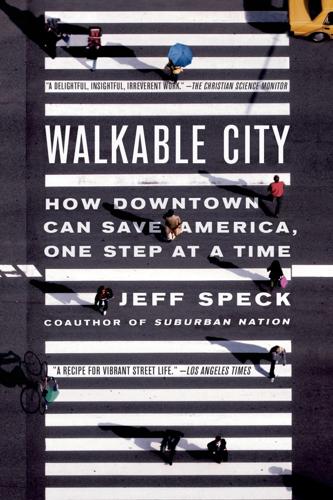
Walkable City: How Downtown Can Save America, One Step at a Time
by
Jeff Speck
Published 13 Nov 2012
Gary Buiso, “Marty’s Lane Pain Is Fodder for His Christmas Card.” 30. Ibid. 31. Andrea Bernstein, “NYC Biking Is Up 14% from 2010; Overall Support Rises.” 32. Lord. 33. Hurst, 81. 34. Ibid., 175. 35. Bernstein. 36. Thomas Gotschi and Kevin Mills, “Active Transportation for America,” 28. 37. Ibid., 24. 38. Ibid., 225. 39. Children’s Safety Network, “Promoting Bicycle Safety for Children.” 40. John Forester, Bicycle Transportation, 2nd ed., 3. 41. Hurst, 90. 42. John Pucher and Ralph Buehler, “Cycling for Few or for Everyone,” 62–63. 43. Mapes, 40. 44. Tom Vanderbilt, Traffic, 199. 45. Hurst, 94. 46.
…
The Boston Globe, February 10, 2011. Goodman, Christy. “Expanded Bike-Sharing Program to Link D.C., Arlington.” The Washington Post, May 23, 2010. Gordon, Rachel. “Parking: S.F. Releases Details on Flexible Pricing.” sfgate.com, April 2, 2011. Gotschi, Thomas, and Kevin Mills. “Active Transportation for America: The Case for Increased Federal Investment in Bicycling and Walking.” railstotrails.org, October 20, 2008. Gros, Daniel. “Coal vs. Oil: Pure Carbon vs. Hydrocarbon.” achangeinthewind.com, December 28, 2007. Groves, Martha. “He Put Parking in Its Place.” The Los Angeles Times, October 16, 2010. Grynbaum, Michael.
…
Lawrence Frank, Lecture to the 18th Congress for the New Urbanism. 5. Molly Farmer, “South Jordan Mom Cited for Neglect for Allowing Child to Walk to School.” 6. Howard Frumkin, Lawrence Frank, and Richard Jackson, Urban Sprawl and Public Health, xii. 7. Thomas Gotschi and Kevin Mills, “Active Transportation for America,” 27. 8. Jan Gehl, Cities for People, 111. 9. Neal Peirce, “Biking and Walking: Our Secret Weapon?” 10. Gotschi and Mills, 44. 11. Jeff Mapes, Pedaling Revolution, 230. 12. Elizabeth Kolbert, “XXXL: Why Are We So Fat?” 13. Christopher B. Leinberger, The Option of Urbanism, 76. 14. Catherine Lutz and Anne Lutz Fernandez, Carjacked, 165. 15.
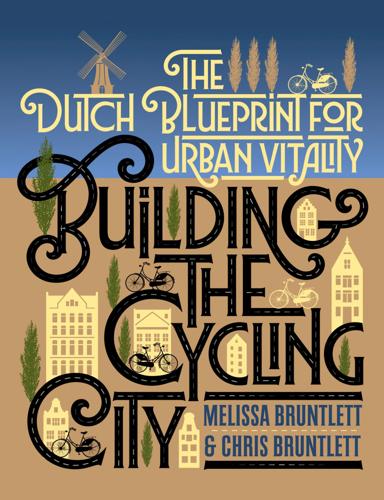
Building the Cycling City: The Dutch Blueprint for Urban Vitality
by
Melissa Bruntlett
and
Chris Bruntlett
Published 27 Aug 2018
The subsequent release of the NACTO Urban Street Design Guide helped codify many of these foreign concepts that were then outside the realm of existing policy, and Wilkes began developing the notion of an AAA network of cycle routes, which would form the basis of a pitch to PeopleForBikes’ Green Lane Project. “Working with PeopleForBikes came a little out of the blue, but ended up being a pretty transformative process,” recalls Lauren Dierenfield, the City’s Active Transportation Division manager. In 2011, the Boulder-based PeopleForBikes—an industry coalition of American bicycle manufacturers and retailers—was seeking partner cities for its Green Lane Project, a five-year initiative to accelerate the spread of protected cycling facilities. One of Austin’s more informed, passionate, and savvy advocates suggested that City staff should look into applying, and the rest was history.
…
In order to fulfill those optimistic business plans, and realize the projected profits, these business owners must help ensure that their customers have great places to ride. And so, tempering the expectations of manufacturers, retailers, and advocates is perhaps Mayne’s most important role, as well as emphasizing the fact that those new users and new trips won’t appear without significant investments in active transportation. Getting the basics right has to come first when it comes to increasing cycling rates and sales of new bicycles—whether electric-assist or not. As Mayne points out: “The underlying belief that e-bikes will fix everything is a bit like expecting e-cars to fix everything. It’s just another form of the same mobility. So the underlying issues of infrastructure, parking, and safety are not resolved by the technology.”
…
Residents of these regions have virtually no choice when it comes to getting around—a condition aptly described as “transport poverty”—worsening the ever-familiar concerns of affordability, congestion, and social equity. The bicycle, seen as a tool for recreation but not transportation, has been reduced to the margins, making up just 1 percent of trips. In Austin, though, a consensus led by the City’s Active Transportation Division has emerged that attracting new people to cycling can address a great number of the city’s most pressing issues. In the last few years, the groundwork has been laid for an ambitious AAA bike network, the vision for which came through strategic partnerships with PeopleForBikes and the Dutch Cycling Embassy. “We’d been following the development of protected infrastructure since stumbling across [City of Portland bicycle coordinator] Roger Geller’s 2006 paper on the ‘interested, but concerned’ cyclist in 2010,” reveals City of Austin transportation planner and street designer Nathan Wilkes.
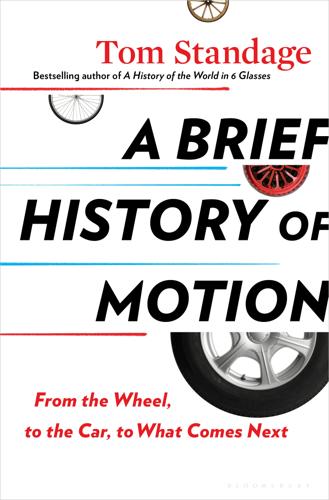
A Brief History of Motion: From the Wheel, to the Car, to What Comes Next
by
Tom Standage
Published 16 Aug 2021
Scandalized Victorians also worried that cycling made women infertile, loosened their morals, led them to develop overly masculine musculature, and generally threatened the natural order of things. But such lurid fears proved unfounded, and as bikes became cheaper and more commonplace, cycling came to be seen primarily as a form of transport rather than a social activity. THE ROAD TO THE AUTOMOBILE Steam trains had shown that horseless transport could be fast. Bicycles had shown that it could be personal. Could it be both? Was it possible to build a vehicle that was as fast as a train, as convenient and personal as a bicycle, and could travel on existing roads like a horse? One way to do it, which inventors had never quite given up on, was to add a steam engine to a carriage, as Cugnot and Trevithick had done.
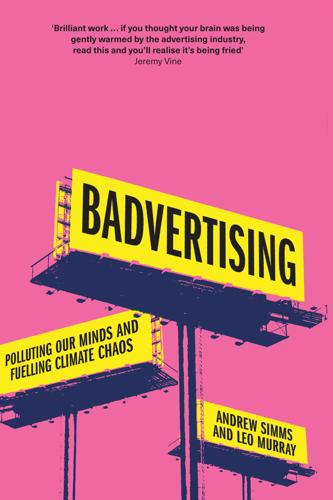
Badvertising
by
Andrew Simms
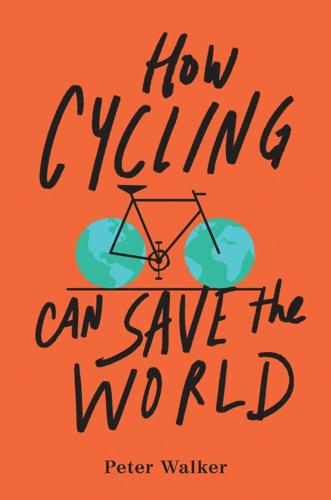
How Cycling Can Save the World
by
Peter Walker
Published 3 Apr 2017
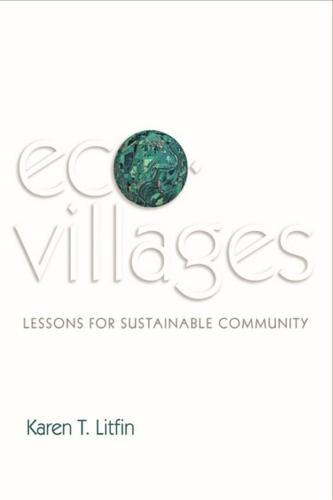
Ecovillages: Lessons for Sustainable Community
by
Karen T. Litfin
Published 16 Dec 2013
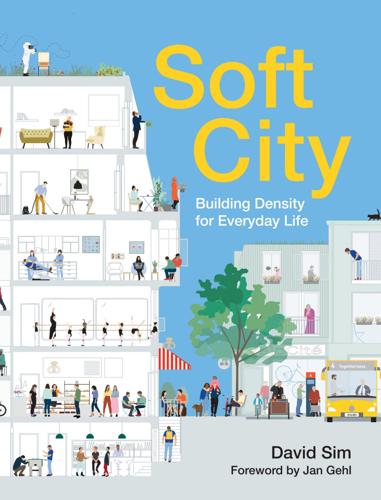
Soft City: Building Density for Everyday Life
by
David Sim
Published 19 Aug 2019
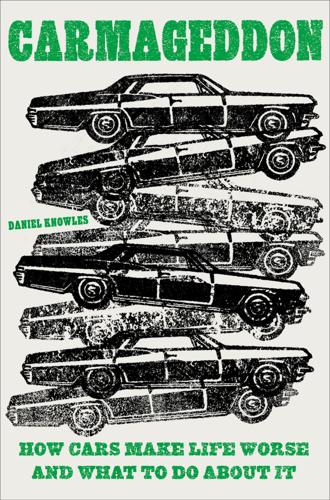
Carmageddon: How Cars Make Life Worse and What to Do About It
by
Daniel Knowles
Published 27 Mar 2023
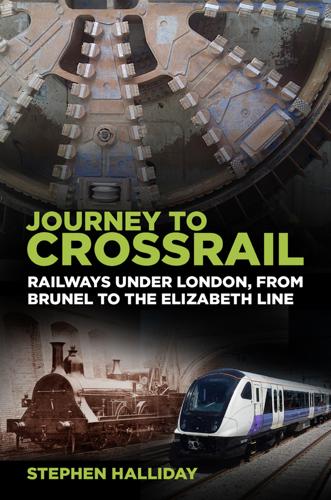
Journey to Crossrail
by
Stephen Halliday
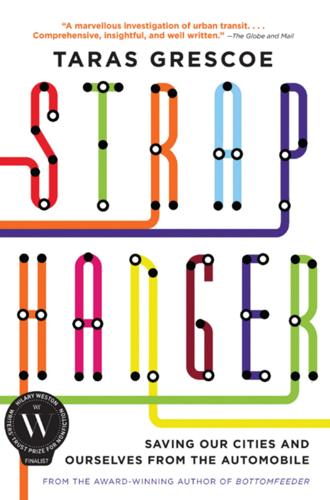
Straphanger
by
Taras Grescoe
Published 8 Sep 2011
You need to get people riding nice and easy, upright on their bikes, where their center of gravity is in the same place as when they’re walking. When you think style over speed, cycling is going to be safe.”* In the United States, Colville-Andersen said, cycling is perceived either as a leisure activity or the transportation choice of marginalized subcultures. “We have to re-democratize the bicycle. Forget the hipsters on fixies with their messenger bags, forget the spandex-clad men riding around in packs, forget the vehicular cyclists.† In Paris, they had no existing subculture of messengers or urban cycle gear, so, when Vélib’ came to town, there was no stigma attached to cycling.
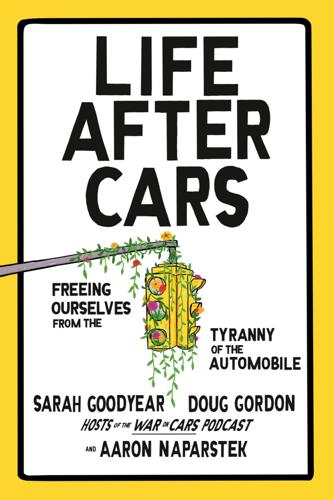
Life After Cars: Freeing Ourselves From the Tyranny of the Automobile
by
Sarah Goodyear
,
Doug Gordon
and
Aaron Naparstek
Published 21 Oct 2025
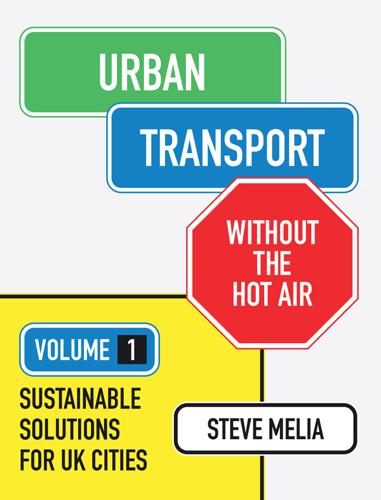
Urban Transport Without the Hot Air, Volume 1
by
Steve Melia
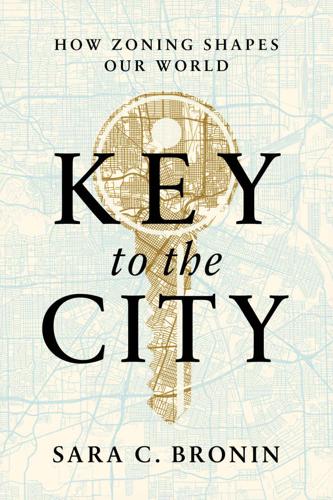
Key to the City: How Zoning Shapes Our World
by
Sara C. Bronin
Published 30 Sep 2024
As part of the transportation-demand management plan requirement, the code suggests several strategies that developers might include, such as free or subsidized transit passes and carpooling programs or benefits. Not every developer of a large building would naturally think of these types of programs for the eventual occupants. In addition, the city has instituted changes that will result in new infrastructure for “active transportation,” a term that includes walking, biking, and public transportation. The Green Code specifically spells out how property owners must site their buildings to ensure safer pedestrian access to parking lots and public transit. In addition, multifamily residences, hotels, shops, and offices must provide long-term and short-term bicycle parking.
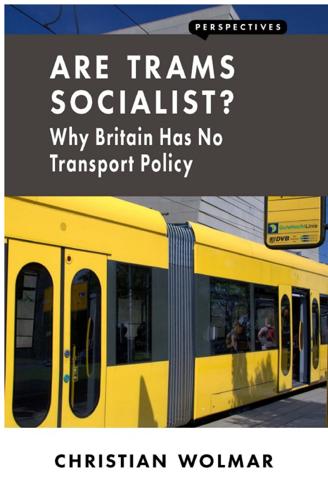
Are Trams Socialist?: Why Britain Has No Transport Policy
by
Christian Wolmar
Published 19 May 2016
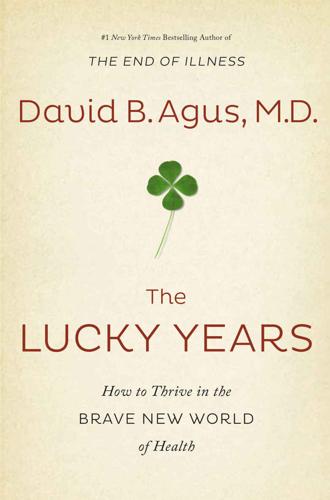
The Lucky Years: How to Thrive in the Brave New World of Health
by
David B. Agus
Published 29 Dec 2015
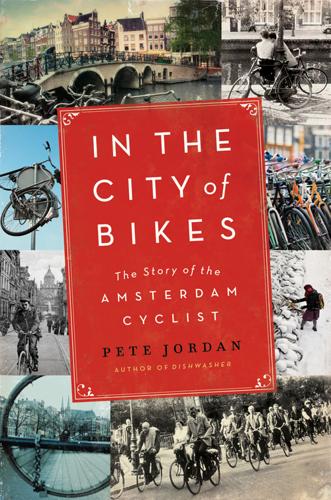
In the City of Bikes: The Story of the Amsterdam Cyclist
by
Pete Jordan
Published 20 Aug 2012
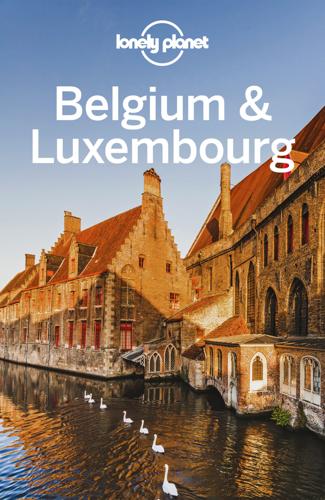
Lonely Planet Belgium & Luxembourg
by
Lonely Planet
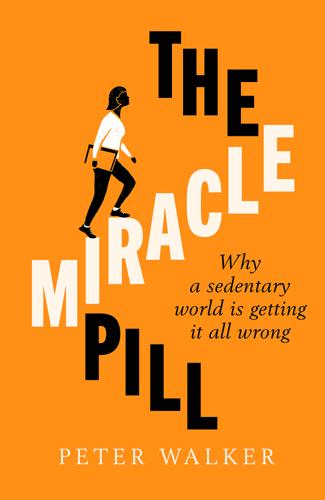
The Miracle Pill
by
Peter Walker
Published 21 Jan 2021
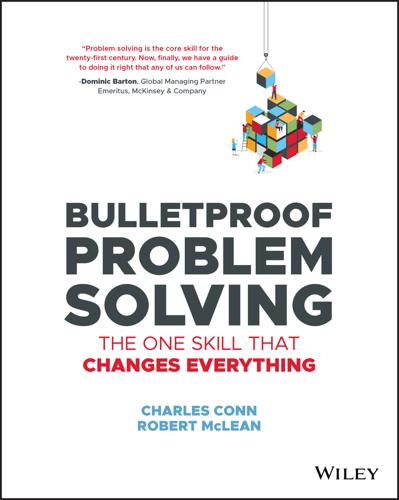
Bulletproof Problem Solving
by
Charles Conn
and
Robert McLean
Published 6 Mar 2019
Over time, the ordering of initiatives will change on the cost curve as information is gathered on cost and impact, making it a dynamic tool for policy makers. And as we explain below on walkability, the cost‐effectiveness can change for an intervention: For example, active transport gets easier to implement if higher property values reduce the net cost of redesign of cities for walking and cycling (via property tax funding). We would like to have seen some interventions that had negative cost, meaning it pays to do them, at the bottom of the cost curve, much as we saw with the carbon‐abatement curve. The MGI analysis points to higher health costs of $750–$1,100 per annum for obese people compared to those in the normal weight range.
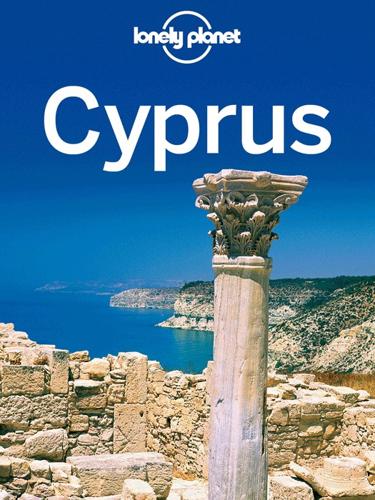
Cyprus Travel Guide
by
Lonely Planet
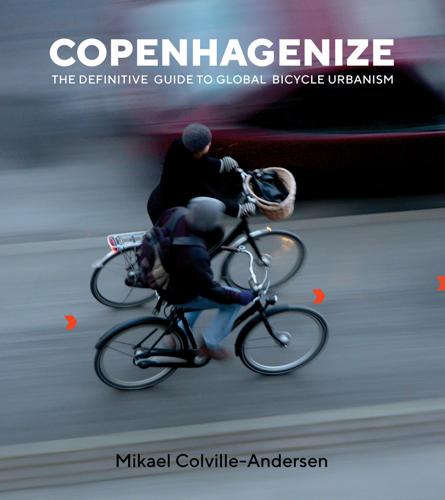
Copenhagenize: The Definitive Guide to Global Bicycle Urbanism
by
Mikael Colville-Andersen
Published 28 Mar 2018
They are a great niche addition to the existing armada of bicycles that have served citizens for 130-odd years. They have the potential to increase the mobility radius of cycling citizens—especially the elderly. All good. The first point of interest to anyone working in urban mobility, active transportation, or whatever they call it where you’re from should be the safety aspect. The average speed of cycling citizens in Copenhagen and Amsterdam is around 15–16 km/h (9–11 mph). Putting vehicles zipping along at 25 km/h (16 mph) or more into that equation would not seem to be wise. If you’ve been to Amsterdam, you know the scourge of the scooters—fast-moving vehicles that cause injury and death to the riders themselves and to others in their path.
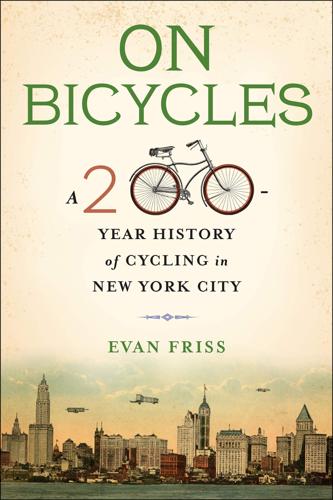
On Bicycles: A 200-Year History of Cycling in New York City
by
Evan Friss
Published 6 May 2019

England
by
David Else
Published 14 Oct 2010
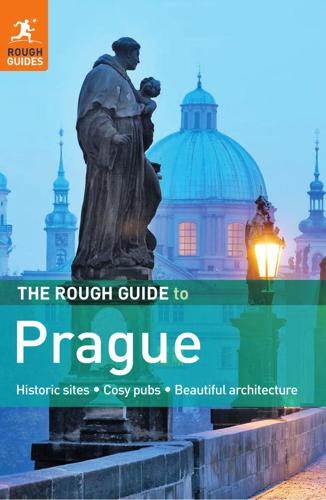
The Rough Guide to Prague
by
Humphreys, Rob
If you’re staying outside the centre, you’ll have no problems; if you’re at a hotel in the centre, they’ll probably have a few parking spaces reserved for guests, though whether you’ll find one vacant is another matter. Cycling Cycling is seen as more of a leisure activity in the Czech Republic than a means of transport. Prague has a handful of brave cycle couriers but the combination of hills, cobbled streets, tram lines and sulphurous air is enough to put most people off. Facilities for bike rental are still not that widespread, but if you’re determined to cycle, head for City Bike, Králodvorská 5, Staré Město (T776 180 284 Wwww.citybike-prague.com; metro Náměstí Republiky) or Praha Bike, Dlouhá 24, Staré Město (T732 388 880, Wwww .prahabike.cz; metro Náměstí Republiky); both outfits also organize group rides through Prague.
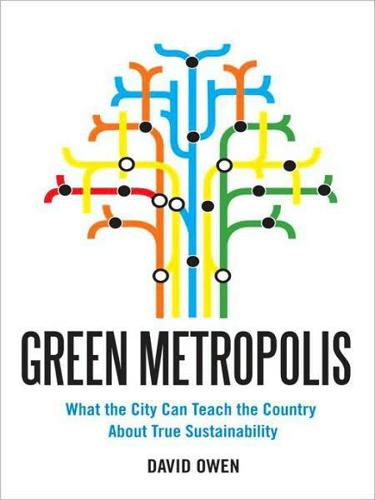
Green Metropolis: Why Living Smaller, Living Closer, and Driving Less Are Thekeys to Sustainability
by
David Owen
Published 16 Sep 2009
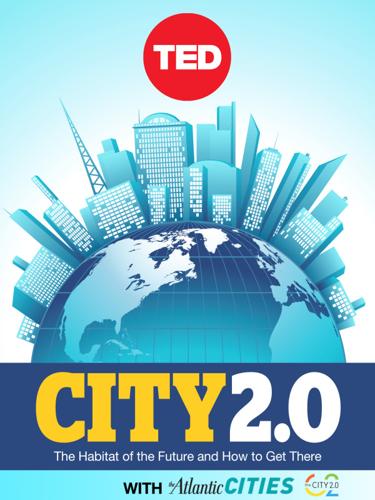
City 2.0: The Habitat of the Future and How to Get There
by
Ted Books
Published 20 Feb 2013
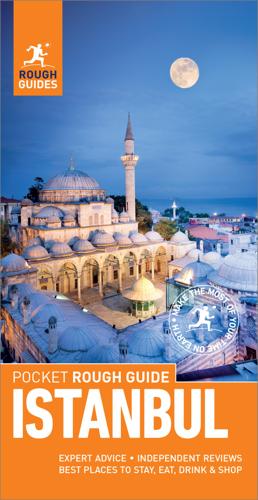
Pocket Rough Guide Istanbul (Travel Guide eBook)
by
Rough Guides
Published 24 May 2019
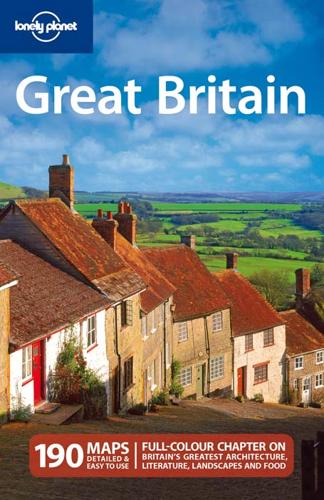
Great Britain
by
David Else
and
Fionn Davenport
Published 2 Jan 2007
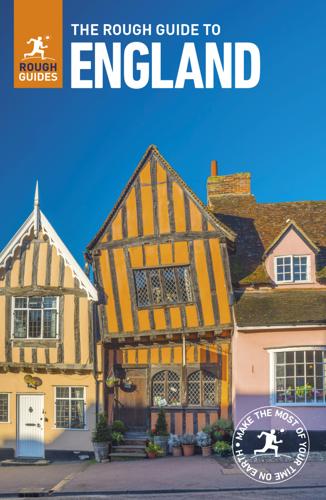
The Rough Guide to England
by
Rough Guides
Published 29 Mar 2018

Early Retirement Extreme
by
Jacob Lund Fisker
Published 30 Sep 2010

Israel & the Palestinian Territories Travel Guide
by
Lonely Planet
White NightCULTURAL (Laila Lavan; www.visit-tel-aviv.com) Each June, the city has one sleepless night when the city's cultural venues stay open and free events are staged in venues including the HaTachana, Sarona Colony, Jaffa Port, beaches, HaBima Sq and Hatikya Market. Cycling Tel AvivSPORTS (www.sovevtlv.org.il) Held in mid-October, this three-day cycling festival is devoted to healthy living, an active lifestyle and green transportation. The main event is a 42km race open to professionals, cycling enthusiasts and families. DON'T MISS DRUMMING INTO SHABBAT Every Friday as the sun goes down, Dolphinarium Beach near Charles Clore Park comes alive with hypnotic tribal rhythms and freestyle dancers. Situated next to the derelict but soon to be redeveloped Dolphinarium nightclub, this fabulous jam session provides an atmospheric and unique lead-up to Shabbat. 4Sleeping There are accommodation choices to meet every budget and style requirement in Tel Aviv, but the city's ever-expanding range of boutique hotels includes the most alluring options.
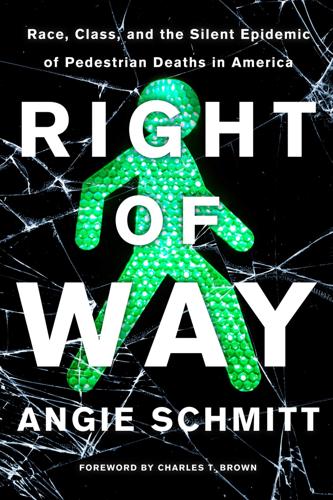
Right of Way: Race, Class, and the Silent Epidemic of Pedestrian Deaths in America
by
Angie Schmitt
Published 26 Aug 2020
Twenty-two US states have amended their constitutions to forbid any gasoline tax revenues at all from being spent on sidewalks.37 Many of these laws were passed in the 1960s with the financial backing of highway construction lobbyists.38 At the federal level, bicyclists and pedestrians now represent about one in five traffic deaths, but they receive less than 1.5 percent of all federal infrastructure funding.39 Increasing political polarization may also play a role. Just as the pedestrian death crisis was beginning to present itself in 2012, and in an era of loud and renewed interest in active transportation, the Republican-led US Congress substantially reduced federal funding support for walking and biking programs. In addition, following the election of Donald Trump in 2016, the newly regulation-averse US Department of Transportation slow-walked reforms that could have, for the first time, made automakers more accountable for their design impacts on pedestrian safety.

World Cities and Nation States
by
Greg Clark
and
Tim Moonen
Published 19 Dec 2016
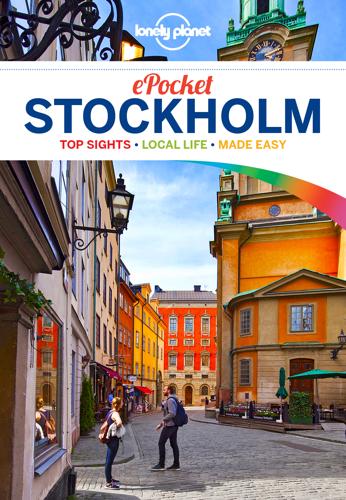
Pocket Stockholm Travel Guide
by
Lonely Planet
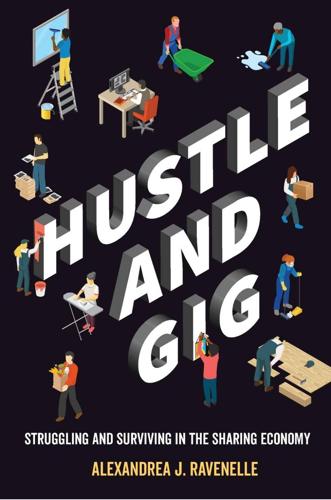
Hustle and Gig: Struggling and Surviving in the Sharing Economy
by
Alexandrea J. Ravenelle
Published 12 Mar 2019
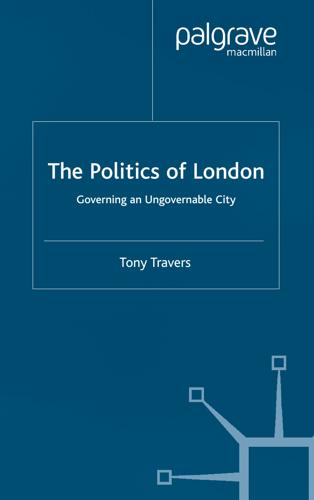
The politics of London: governing an ungovernable city
by
Tony Travers
Published 15 Dec 2004
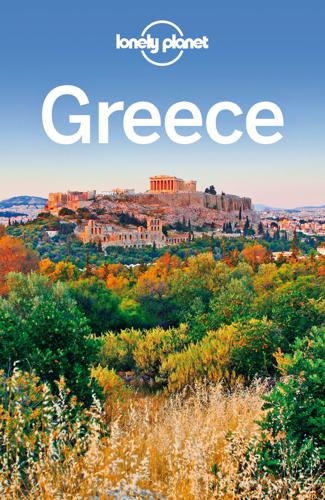
Greece Travel Guide
by
Lonely Planet
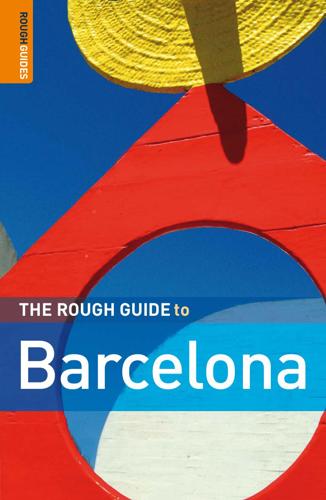
The Rough Guide to Barcelona 8
by
Jules Brown
and
Rough Guides
Published 2 Feb 2009

The Rough Guide To Devon & Cornwall
by
Rough Guides
Published 29 Apr 2024

Water: A Biography
by
Giulio Boccaletti
Published 13 Sep 2021
In an average year, seventy centimeters of liquid water fall down, which means that the entire stock of water in the atmosphere cycles through it almost thirty times over that period. In that process, water transfers vast amounts of energy from the surface of the planet into the atmosphere, warming it. The energy involved in weather associated with those cycles of water can overwhelm all human activity, even today. If the energy used in the global economy—all transport, power plants, homes, heating systems—were one unit of energy, then the water cycle of an average hurricane releases roughly one unit, the Asian monsoon about ten units, and global annual precipitation several thousand units. Water overwhelms humanity. The reason for this awesome power is an astrophysical accident.

The Rough Guide to Devon & Cornwall
by
Robert Andrews
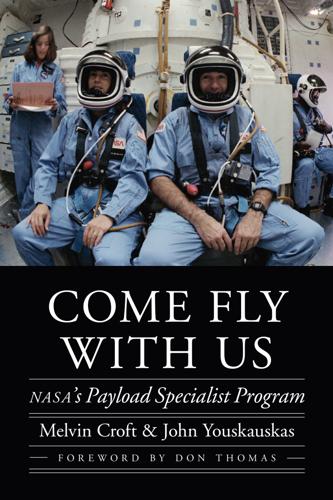
Come Fly With Us: NASA's Payload Specialist Program
by
Melvin Croft
,
John Youskauskas
and
Don Thomas
Published 1 Feb 2019
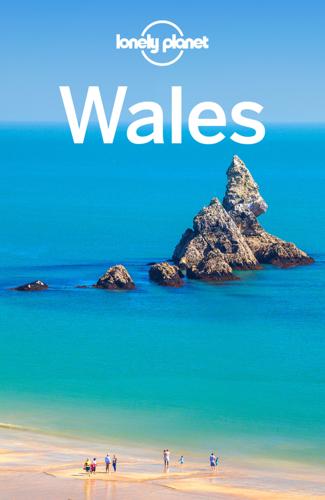
Lonely Planet Wales (Travel Guide)
by
Lonely Planet
Published 17 Apr 2017
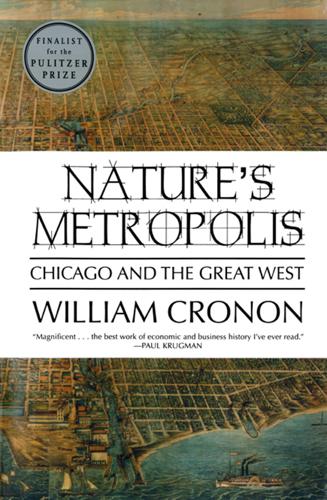
Nature's Metropolis: Chicago and the Great West
by
William Cronon
Published 2 Nov 2009
As one railroad promoter wryly remarked, “It is against the policy of Americans to remain locked up by ice one half of the year.”81 The railroads could not break the wheel of the seasons entirely: the fall harvest, for instance, remained a particularly active time for travel, straining all forms of transportation. But they did reduce the seasonal economic cycles that followed the rising and falling curves of temperature and precipitation.82 Just as the railroad changed the ways people experienced the seasons of the year, so too did it begin to change their relationship to the hours of the day. No earlier invention had so fundamentally altered people’s expectations of how long it took to travel between two distant points on the continent, for no earlier form of transportation had ever moved people so quickly.
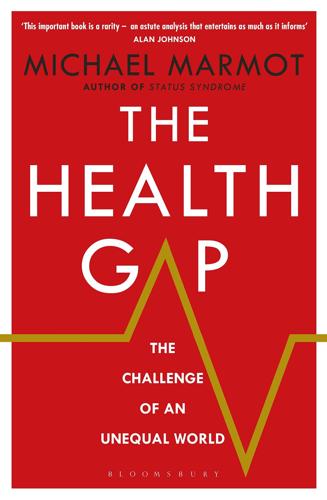
The Health Gap: The Challenge of an Unequal World
by
Michael Marmot
Published 9 Sep 2015
The image of a toff on a bicycle is not far from what the evidence shows: the higher the social position, the more likely are people to have used a bicycle in the previous week. People at the top make more trips of all types than those at the bottom and more by walking and cycling.40 Happily, some in urban planning are putting their talents to designing cities with a view to walkability and active transport. I want to highlight two issues. First is the safe journey to school – taking steps to encourage children to walk or cycle to school. To achieve this will take concentration on the second issue: making cycling and walking safe. In Copenhagen, 36 per cent of the journeys to work or education are by bicycle.41 Cycle travel is relatively safe because of the separation of cars, pedestrians and cycles.

Southeast Asia on a Shoestring Travel Guide
by
Lonely Planet
Published 30 May 2012
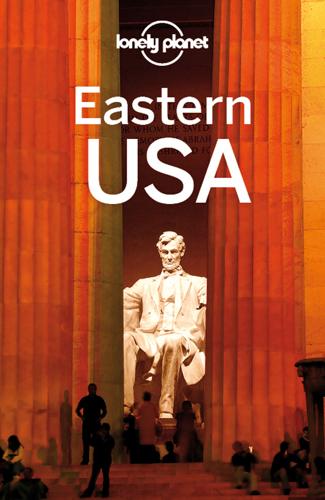
Eastern USA
by
Lonely Planet
The cost is roughly $10 per hour, or $35 per day (helmet and lock included). Both companies also offer two- to four-hour tours ($35 to $60, including bikes) that cover themes like the lakefront, beer and pizza munching, or Obama sights (highly recommended!). The Active Transportation Alliance (www.activetrans.org) lists bike events around town. Bike Chicago CYCLING ( 888-245-3929; www.bikechicago.com; 239 E Randolph St; 6:30am-8pm Mon-Fri, from 8am Sat & Sun, closed Sat & Sun Nov-Mar) This one’s quite corporate, and has multiple locations. The main one is at Millennium Park; there’s another at Navy Pier. Bobby’s Bike Hike CYCLING ( 312-915-0995; www.bobbysbikehike.com; 465 N McClurg Ct; 8:30am-7pm Jun-Aug, closed Dec-Feb) The eager upstart; located at the River East Docks’ Ogden Slip.
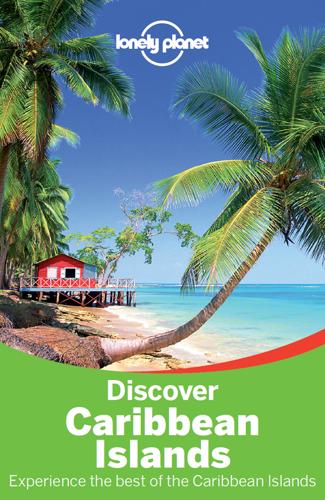
Discover Caribbean Islands
by
Lonely Planet

City: A Guidebook for the Urban Age
by
P. D. Smith
Published 19 Jun 2012

Rick Steves Florence & Tuscany 2017
by
Rick Steves
Published 8 Nov 2016
See also specific family members Medici Fortezza Girifalco (Cortona): 599 Medici Fortress and Archaeological Park (Volterra): 488–489 Medici-Riccardi Palace: 52, 194–198; general info, 37, 52, 194–195; self-guided tour, 195–198 Medici Venus: 120–121 Medieval Festival (Volterra): 474 Memmi, Lippo: 504–505 Mercato: See Markets Mercato Centrale: 52, 322; eating in or near, 285–287, 290; sleeping near, 271, 274 Mercato Nuovo: 55, 324 Metric system: 686–687 Michelangelo Buonarroti: 94, 105, 226, 377, 610; Accademia, 97–104; Bargello, 105, 131–133; David, 43, 91–92, 97–100, 102–103, 175; Duomo Museum, 105, 165; guided tours, 30; House (Casa Buonarroti), 63–64; Laurentian Medici Library, 50, 105; Medici Chapels, 105, 187–193; Palazzo Vecchio, 105, 178–179, 181–182; The Prisoners, 100–102; Santo Spirito, 68, 105, 226; tomb, in Santa Croce, 105, 214; Uffizi Gallery, 105, 122–123 Microbreweries, in Florence: 334 Milan: bus travel, 405; train travel, 338, 468 Mobile (cell) phones: 10, 652–655 Money: 617–622; budgeting, 6–7 Money belts: 5, 309, 618 Money-saving tips: 28, 617; eating, 640–643; Firenze Card, 17, 19, 22–23, 33–34; free Sundays, 17, 32; sleeping, 625–626 Montalcino: 470, 516, 547, 555–561, 565; eating, 559–561; map, 556; sights, 557–558; sleeping, 521, 559; tourist information, 557; transportation, 557, 561; wine, 293, 555, 560–561 Montalcino City Hall: 557, 558 Montalcino Fortezza: 557–558 Montalcino Museums: 558 Monte Amiata: 542, 548 Monte Oliveto Maggiore Abbey: 573–574, 577–588; background, 579–580; general info, 516, 578; self-guided tour, 580–588 Montepulciano: 470, 516, 521–536, 565; eating, 534–536; helpful hints, 523; map, 524; sights/activities, 525–533; sleeping, 521, 533–534; tourist information, 522; transportation, 522–523, 536; walking tour, 525–530; wine, 293, 522, 530–531, 532, 568 Montepulciano Duomo: 531–532 Montepulciano Town Hall: 528 Monteriggioni: 470, 509–510 Monticchiello: 517, 548, 554–555; eating, 535 Montisi: 515–516 Movies, recommended: 685; for children, 308 Movie theater, in Florence: 335 Murlo: 574 Musei di Montalcino: 558 Museo Civico (Civic Museum): San Gimignano, 504–505; Siena, 354, 366–371 Museo dei Marmi (Medici-Riccardi Palace): 196 Museo dell’Accademia Etrusca e della Città di Cortona: 597 Museo delle Sinopie (Pisa): 433–434 Museo dell’Opera del Duomo (Florence): See Florence Duomo Museum Museo dell’Opera del Duomo (Siena): See Siena Duomo Museum Museo dell’Opificio delle Pietre Dure: 48, 311–312 Museo Diocesano (Cortona): 597–598 Museo Diocesano (Pienza): 540 Museo di San Marco: See Museum of San Marco Museo Etrusco Guarnacci (Volterra): 485–487 Museo Galilei e Istituto di Storia della Scienza: See Galileo Science Museum Museo Leonardo da Vinci: 52–53, 310 Museo Nazionale del Bargello: See Bargello Museo Nazionale di San Matteo (Pisa): 435 Museum of Musical Instruments: 104–105 Museum of Precious Stones: 48, 311–312 Museum of San Marco: 45, 48, 140–156; general info, 36, 45, 140–141; maps, 142, 151; self-guided tour, 141–156 Museum of the Sinopias (Pisa): 433–434 Museums: with children, 310–311; daily reminder, 26–27; Firenze Card, 17, 19, 22–23, 33–34; free Sundays, 17, 32; reservations, 16–17; sightseeing tips, 32–35, 38, 623–624.
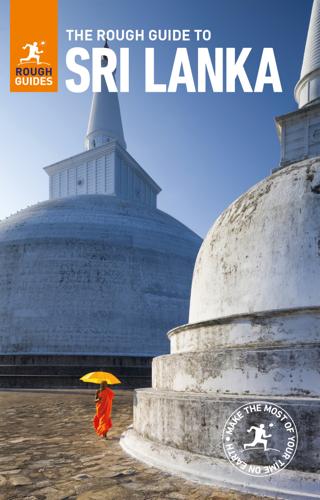
The Rough Guide to Sri Lanka
by
Rough Guides
Published 21 Sep 2018

Italy
by
Damien Simonis
Published 31 Jul 2010

USA Travel Guide
by
Lonely, Planet
The cost is roughly $10 per hour, or $35 per day (helmet and lock included). Both companies also offer two- to four-hour tours ($35 to $60, including bikes) that cover themes like the lakefront, beer and pizza munching, or Obama sights (highly recommended!). The Active Transportation Alliance (www.activetrans.org) lists bike events around town. Bike Chicago CYCLING Offline map Google map ( 888-245-3929; www.bikechicago.com; 239 E Randolph St; 6:30am-8pm Mon-Fri, from 8am Sat & Sun, closed Sat & Sun Nov-Mar) This one’s quite corporate, and has multiple locations. The main one is at Millennium Park; there’s another at Navy Pier.
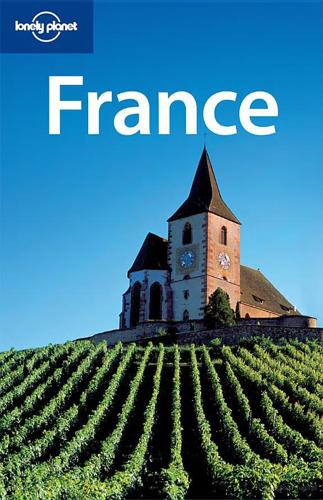
France (Lonely Planet, 8th Edition)
by
Nicola Williams
Published 14 Oct 2010
In chapter subsections and city listings, details appear either under Tours or under Activities. The Association of British Travel Organisers to France (www.holidayfrance.org.uk) has an online list of UK-based companies offering trips to France – click ‘ABTOF Members’ under ‘Directory’. A multitude of companies run activities-based tours, usually including accommodation, meals and transport. ATG Oxford (www.atg-oxford.co.uk) Cycling and rambling holidays for independent travellers. Butterfield & Robinson (www.butterfield.com) Canada-based upmarket walking and biking holidays. CBT Tours (www.biketrip.net) Cycling tours are the speciality of this US-based outfit. Classic Bike Provence (www.classicbikeprovence.com) Motorcycling tours in Provence and beyond astride classic bikes from the ’50s to the ’80s.
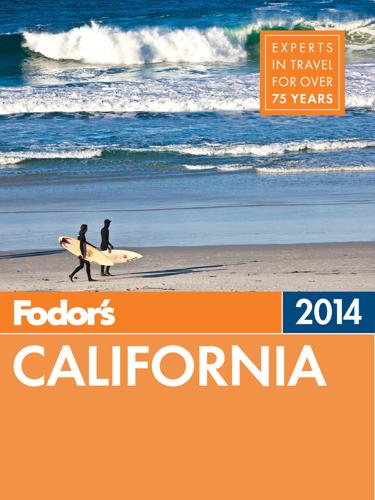
Fodor's California 2014
by
Fodor's
Published 5 Nov 2013